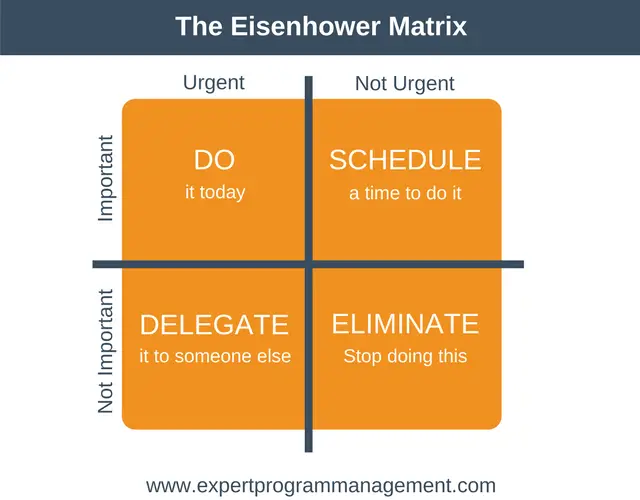Finding your priorities with the Eisenhower retrospective
If you are in need of an agile retrospective that will help you determine which issues are worth resolving, and which do not have any value? The Eisenhower retrospective can help you with that.
Eisenhower Matrix
First of all, let’s take a look at what the Eisenhower Matrix exactly is before we dive into the retrospective. The matrix is named after the former US president Dwight Eisenhower, and the goal is to score our actions into 2 categories: Urgent & Important. Our actions can be scored on whether they are important or not important, and if they are urgent or not urgent. The matrix looks as follows:

When we scored our actions, they can be placed in 4 categories:
Do
This is the magic zone, everything in this zone is urgent and important. Actions in this zone should be picked up as soon as possible, and have priority over the other ones.
Schedule
Actions in this category are important, but not urgent. This means you want to do these action items, but instead of doing them right now, you should plan these action items.
Delegate
Actions that are not important but are urgent, are actions that you should not do yourself. These are prime candidates to delegate to a competent co-worker. Are there any co-workers for who these actions are Important? If they are, great! Delegate it, but if they are not, it might be time to reconsider your priorities.
Eliminate
Actions in these categories are not important and not urgent. Why do we have actions here? In our personal lives, these usually are things that are fun to do. If any work-related actions end up here, it is best to eliminate those actions.
The retrospective
Since you now know what the Eisenhower matrix is, and how to use it to determine what to do with our actions. Let’s take a look at how we can use it in a retrospective form.
Gathering insights
First of all, we need a retrospective form to gather action items to prioritize. There are several forms to do this, but they all point to the basics of a retrospective: What went well? what didn’t work? What should we start doing? I usually use https://funretrospectives.com to find a form. Or check any retrospectives I have blogged about in the retrospective category. You cannot go wrong with the starfish or the hot air balloon. Once you gathered insights, we can move to the next step
Placing them on the Matrix
In preparation for this retrospective, print the matrix, or draw it on a whiteboard. As a next step, we want to cover the name of the zones (Do, Schedule, Delegate, Eliminate). Nobody wants to place their actions on the eliminate zone if they know it beforehand 😉
When you have all the actions from the previous activity, gather the group around the matrix. Grab the actions, and let the entire group decide where should each action item go.
The reveal
It is time for the big reveal. When every action is placed, reveal the titles of the zones. Start with the eliminate zone. Apparently, no one found these actions important and urgent, and we are going to eliminate these.
The delegate zone is not a category you want to focus on for this retrospective. Discuss the zone briefly, and move to plan. Any actions in the plan can be assigned for people to plan in the long term.
Finally, we are in the magic zone. The do zone. These are the real outcome of this retrospective. The entire group decided these actions were worth acting on now. Discuss each action one by one. If anyone speaks up about an action, assign them as the one to work on that action, if they feel this is important, they are more likely to do it.
Conclusion
The Eisenhower retrospective can be used to find priorities when they are not completely clear. Have you tried this retrospective? Let me know how it worked out!